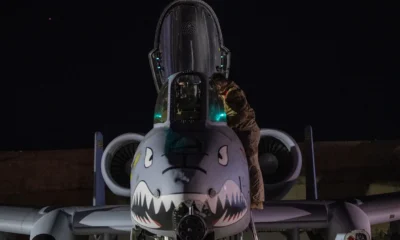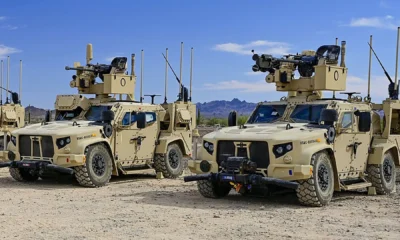Military
As Global Powers Battle Over AI in Warfare, Who Will Define the Rules?

AI’s Battlefield: The Race to Control Military’s New Frontier
The world is on the brink of a high-stakes showdown over artificial intelligence (AI) in warfare, with the specter of a new arms race looming large. The 2020s have ushered in an era of unprecedented transformation, where AI’s dual-use nature—serving both civilian and military purposes—has sparked urgent debates about global governance. As nations scramble to integrate AI into their defense systems, the quest to regulate this powerful technology has never been more critical—or more contentious.
The integration of AI into military operations is akin to the advent of nuclear weapons, raising fears of doomsday scenarios and global instability. The urgency for a unified framework to govern military AI is palpable, as countries race to secure their technological edge. Despite some progress, such as the European Union’s AI Act and a UN General Assembly resolution, these initiatives fall short of addressing the rapid pace of AI development in warfare.
Since 2023, two significant frameworks have emerged: the REAIM Summit and the U.S.-led Political Declaration. The REAIM Summit, a Dutch-South Korean initiative, represents a bottom-up approach. It’s a sprawling attempt to gather 2,000 participants from 100 countries to debate and shape norms for military AI. The “Call to Action” from this summit aims to create a comprehensive framework through regional workshops and further discussions in Seoul in 2024. Its inclusive stance is meant to foster global collaboration but could lead to slow, fragmented progress.
In contrast, the U.S. Political Declaration is a top-down approach, directly addressing sovereign states. Launched in February 2024, it’s backed by 54 countries, including nearly all EU member states. The declaration outlines ten measures and six pledges to regulate military AI. Yet, its effectiveness is in question, given potential shifts in U.S. leadership and the geopolitical tensions with China and Russia. Both superpowers view AI as a game-changer, with Russia accelerating its AI efforts despite ongoing conflict in Ukraine, and China eyeing AI as a strategic asset in its regional ambitions.
The challenge of achieving a universally agreed-upon convention is daunting. The rapid evolution of AI outpaces traditional arms control measures, making prolonged negotiations seem futile. While the REAIM Summit provides a platform for broader engagement, the Political Declaration serves as a pragmatic, albeit less ambitious, attempt to set international norms. However, the lack of support from major powers and the Global South complicates the process.
Europe, despite lagging behind the U.S., China, and Russia in military AI, has a pivotal role to play. The EU’s Defence Innovation Office in Kiev highlights its commitment to understanding and leveraging military AI insights. For Europe, the stakes are high. By aligning with REAIM and advocating for the Political Declaration, Europe could play a crucial role in shaping a global governance framework for military AI, potentially tempering the rise of a new arms race.
As the global community grapples with the implications of military AI, the urgency for effective regulation is undeniable. Europe must lead the charge in making military AI governance a priority, balancing the ambitions of the REAIM Summit with the practicalities of the Political Declaration. The question remains: can the world’s powers find common ground before the technology they seek to control accelerates beyond their grasp?
Congress’s War on China: Biotech, Drones, and Farmland Under Siege
Maritime Security
Anduril’s $1.1bn Deal Boosts Australia’s Undersea Defence Industry

U.S. defence firm Anduril Industries opened a Sydney factory this week to build its “Ghost Shark” autonomous undersea vehicles, a tangible milestone in Australia’s push for sovereign maritime capability.
The A$1.7 billion ($1.1 billion) program — awarded in September to co-develop a fleet for the Royal Australian Navy — signals Canberra’s growing appetite for unmanned systems that can patrol littoral waters, deter aggression, and extend surveillance without putting sailors at direct risk.
Anduril says the first Ghost Shark is complete and ready for in-water trials ahead of a January delivery. The 7,400-square-metre plant will scale to full production in 2026 and create roughly 150 skilled jobs, while more than 40 local suppliers will feed parts into the programme.
For Australia, that supply-chain angle matters as much as the hardware: domestic manufacturing reduces reliance on foreign suppliers, creates political capital at home, and opens an export pathway to allies — subject, of course, to Canberra’s export controls.
Strategically, Ghost Sharks fit a wider logic. Australia faces an intensifying maritime environment in the Indo-Pacific where seabed sensors, unmanned surface vessels, and autonomous underwater systems increasingly define naval competition.
Autonomous systems can operate persistently, collect acoustic and electronic intelligence, and create layered defense zones around critical ports and sea lines of communication.
That matters for Australia’s deterrence posture in the face of sophisticated undersea capabilities deployed by regional peers.
But delivered capability will hinge on integration. Fielding dozens of underwater drones is not merely a procurement exercise; it requires doctrine, secure communications, maintenance networks, and robust rules of engagement to avoid accidents or escalation.
Interoperability with existing naval platforms and allied forces will determine whether Ghost Sharks are a niche tool or a force-multiplying node in a distributed maritime architecture.
There are also political tradeoffs. Building military kit locally brings jobs and industrial resilience, yet it raises questions about export controls, technology transfer, and alliance dependency if critical components remain foreign-sourced.
Anduril’s Sydney plant promises local content, but Canberra must guard against hollow sovereignty — factories onshore that still depend on offshore supply and design authority.
If the in-water tests succeed and the factory hits its stride in 2026, Australia will have a credible path to fielding persistent undersea autonomy at scale.
That outcome would mark a turning point: not just in capability, but in how democracies build resilient defence industries for the age of unmanned warfare.
Military
US Approves $1 Billion Missile Sale to Finland Amid Rising Russia Tensions
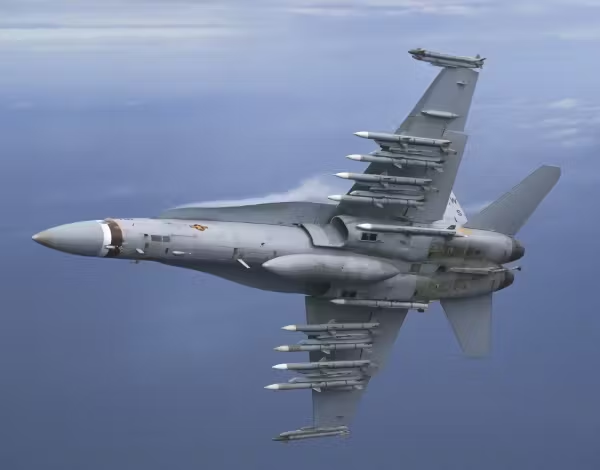
The United States has approved the sale of more than $1 billion in advanced air-to-air missiles to Finland, a move underscoring deepening defense ties with NATO’s newest member as the alliance braces for continued confrontation with Russia.
The $1.07 billion package includes dozens of AIM-120 Advanced Medium-Range Air-to-Air Missiles (AMRAAM) and associated equipment, according to the Defense Security Cooperation Agency (DSCA). The proposed deal still requires congressional approval but is not expected to face significant opposition.
“The sale will improve Finland’s capability to meet current and future threats and enhance its interoperability with U.S. and allied forces,” the DSCA said in a statement. “It will also support the foreign policy and national security objectives of the United States by strengthening the security of a NATO ally that is a force for political stability and economic progress in Europe.”
Finland abandoned decades of military nonalignment and joined NATO in April 2023, following Russia’s full-scale invasion of Ukraine. Its accession instantly doubled the length of NATO’s direct border with Russia, turning the country of 5.6 million into a frontline state in Europe’s security architecture.
Since then, Helsinki has rapidly expanded its defense spending and sought closer integration with Western weapons systems. The missile purchase, analysts say, will bolster Finland’s F-35 fighter fleet and tighten interoperability with other NATO air forces at a time when Russian drone and missile attacks in Eastern Europe are escalating.
The sale also reflects Washington’s determination to arm allies positioned on NATO’s northeastern flank, where leaders warn that Russian President Vladimir Putin could test the alliance’s defenses in the coming years.
For Finland, which shares an 830-mile border with Russia, the deal is not only about modernizing its arsenal but also about signaling deterrence.
Congress now has 30 days to review the transaction.
Comment
China’s Space Grab in Africa: How Beijing Is Winning the Final Frontier as Trump Slashes U.S. Aid

While Trump retreats, China plants its flag in Africa’s skies—building satellites, telescopes, and alliances to dominate space and surveillance.
As Trump guts foreign aid, China ramps up space partnerships across Africa, embedding surveillance tech and satellites that could shift the balance in the global space race—and military power.
Space for Sale: How China Is Colonizing Africa’s Skies as America Pulls Back
While the United States under President Trump slashes development aid and scales down soft power, China is quietly launching a space takeover in Africa—one satellite, telescope, and military-grade surveillance system at a time.
From a space lab outside Cairo to high-powered telescopes tracking orbital objects from Egyptian hilltops, China is embedding itself deep into Africa’s burgeoning space infrastructure. Beneath the banner of cooperation and development, Beijing is not just gifting technology—it’s harvesting data, expanding its global surveillance network, and establishing a strategic military and political footprint across the continent.
This is no secret to Washington. Intelligence veterans like Nicholas Eftimiades warn that China is “democratizing space to enhance its authoritarian capabilities”—a global dragnet cloaked in diplomacy. And it’s working. More than 23 African nations now partner with China on space ventures, from satellite launches and ground stations to a proposed joint moon base that openly rivals NASA’s Artemis program.
The Space City outside Cairo, where Chinese engineers outnumber locals, is emblematic. The “African-built” satellites launched there? Mostly assembled in China. Data ownership? Officially Egyptian—but insiders say Beijing still taps into the stream. It’s not just soft power—it’s hardware dominance with military consequences, including anti-satellite warfare readiness and real-time surveillance of joint U.S.-Egyptian exercises.
As China builds eyes in the sky, Trump’s America is going dark—cutting U.S. Agency for International Development funds and retreating from space diplomacy. Meanwhile, SpaceX’s Elon Musk races ahead in military-grade satellite networks, but there’s little sign of the U.S. competing with China’s ground-level infiltration across Africa.
The result? A Cold War-style showdown in orbit, with Africa as the battlefield—and Trump’s retreat from development aid and soft power may have handed Beijing the launch codes for a new global order in space.
China isn’t just investing in Africa—it’s outsourcing its space program onto the continent, collecting data, projecting power, and rewriting the rules of 21st-century dominance. The moon may be next, but the race is already raging here on Earth. And right now, Beijing is winning.
Military
Putin Orders Russia to Boost Size of Army by 180,000 Troops to 1.5 million
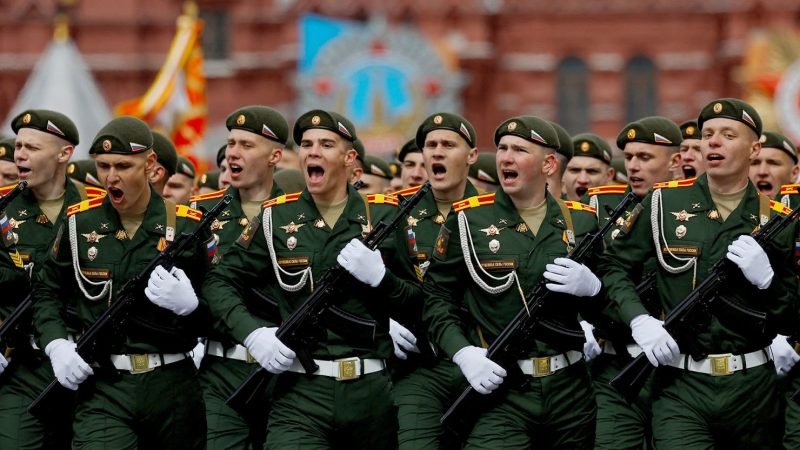
With an Increase of 180,000 Troops, Russia’s Military Expansion Stirs Controversy Amidst Rising Casualty Rates and Ukrainian Advances
President Vladimir Putin has decreed a significant expansion of the nation’s armed forces, commanding an increase of 180,000 troops. This latest order marks the third expansion since the onset of Russia’s invasion of Ukraine in February 2022, pushing the total number of Russian military personnel to an astonishing 2.4 million, including 1.5 million active troops. The new deployment will come into effect this December, as outlined in a decree published by the Kremlin on Monday.
This sweeping increase in troop numbers follows a particularly intense period of conflict. Last month, Ukraine launched a bold offensive into Russia’s southern Kursk region, marking the first foreign incursion into Russian territory since World War II. In response, Russia has intensified its military operations, aiming to drive Ukrainian forces out of Kursk and advance toward the strategic Ukrainian town of Pokrovsk in the eastern Donbas region.
Since the start of the invasion, Putin has overseen two previous expansions of military forces. In August 2022, he ordered an increase of 137,000 troops, raising the total number to just over 2 million personnel. This was followed by a partial mobilization in September 2022, which saw military reservists and citizens with combat experience drafted into service. The mobilization, which led to a mass exodus of Russian nationals seeking refuge in neighboring countries, was suspended in November 2023 after the target of 300,000 recruits was reportedly achieved.
In December 2023, Putin ordered another increase of 170,000 troops, bringing the total to 1.32 million active personnel. Despite these measures, the true extent of Russian military losses remains veiled in secrecy. Russian Defense Minister Sergei Shoigu reported 5,937 fatalities in September 2022, but no updated figures have been disclosed since.
In stark contrast, Ukrainian and Western intelligence estimates suggest far higher casualties. The General Staff of Ukraine’s military reported that Russia has lost approximately 616,300 troops, while the UK’s Ministry of Defense estimates losses exceeding 610,000. The dire situation is compounded by a high daily casualty rate, which is projected to average over 1,000 per day throughout September 2024 as Russia engages in extensive operations from Kursk in the north to Robotyne in the south.
Putin’s latest decree underscores a desperate bid to fortify Russia’s military presence amidst relentless Ukrainian resistance and mounting casualties. As the conflict drags on, the world watches closely to see how these massive troop increases will impact the ongoing war and the broader geopolitical landscape.
Editor's Pick
US Intel Unveils Russian Military’s Hidden Role with Houthis in Yemen
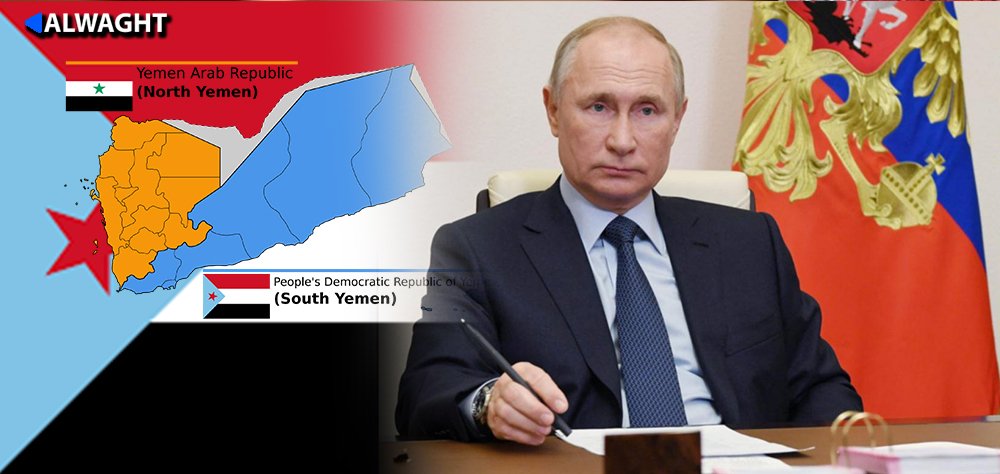
GRU Officers Advising Iran-Backed Rebels on Red Sea Maritime Attacks
US intelligence suggests that Russian military intelligence officers, specifically from the GRU, have been operating within Houthi-controlled regions of Yemen. Their mission? To aid the Iran-backed Houthis in targeting commercial vessels in the Red Sea. This covert operation has been ongoing for several months, a senior US official disclosed under the condition of anonymity.
The precise nature of the GRU’s involvement remains shrouded in secrecy, but their advisory role is clear. The Houthis, claiming solidarity with besieged Palestinians in Gaza, have intensified their attacks on maritime targets, drawing on Russian expertise to bolster their campaign.
This development signals Russia’s deepening ties with the Houthis, a move that could reshape the balance of power in the region. Earlier this year, President Vladimir Putin contemplated arming the Houthis with advanced anti-ship cruise missiles, a plan thwarted only by Saudi Crown Prince Mohammed bin Salman’s intervention. Yet, concerns linger in Washington that Putin might still use the Houthis as leverage against US policies, especially concerning Ukraine.
Samuel Ramani, a renowned expert on Russia’s Middle Eastern policies, suggests that deploying technical advisors might be Putin’s middle ground, allowing him to deepen cooperation without overtly escalating military support. The move aligns with Russia’s broader strategy of embedding itself in regional conflicts, as seen with its mercenaries in Libya and military presence in Syria.
The timing of this revelation is critical. The Houthis have ramped up missile and drone attacks on commercial vessels since Hamas’ assault on Israel on October 7th. While US retaliatory strikes on the Houthis have been ineffective, the group’s attacks have been selective, sparing ships linked to Russia, Iran, and China. This selective targeting underscores the Houthis’ maritime intelligence limitations and their reliance on open-source data, further highlighting the need for GRU expertise.
Publicly, Russia’s engagement with the Houthis has become more visible. In July, Putin’s deputy foreign minister met with a Houthi delegation in Moscow, signaling a closer alliance. The US anticipates that Iran’s “axis of resistance,” which includes the Houthis, will play a pivotal role in any retaliatory actions against Israel.
Former US officials suggest that Putin might view the escalating Middle East tensions as an opportunity to pressure the US, drawing a parallel between Ukraine’s attacks on Russian vessels in the Black Sea and potential Houthi actions in the Red Sea. General Frank McKenzie, ex-commander of US Central Command, hinted that Putin could see this as a form of “Red Sea payback.”
Despite the mounting evidence, official responses from the White House and the Department of Defense remain absent. The US intelligence community, however, is on high alert, closely monitoring the situation as the geopolitical stakes in the region continue to rise.
Russia’s strategic maneuvering in Yemen is part of a broader pattern. With the Wagner Group’s activities in Libya and the Sahel, and military deployments in Syria, Russia’s footprint in the Middle East is expanding. The potential for a Russian naval base in Sudan’s Red Sea coast only adds to this intricate geopolitical web.
In this complex game of power and influence, Putin’s decision to place GRU officers in Yemen reflects a calculated move to enhance the Houthis’ operational capabilities while safeguarding Russian interests in the Red Sea. As tensions escalate, the world watches closely, bracing for the potential fallout from this clandestine collaboration.
Africa
U.S. Military Executes High-Stakes Crisis Response Drill in Somalia

EARF Enhances Rapid Deployment and Security Measures in Kismayo
In a display of military precision and readiness, U.S. soldiers from the East Africa Response Force (EARF) engaged in a multi-day crisis response exercise at Cooperative Security Location (CSL) Kismayo, Somalia, on July 21, 2024. This critical drill aimed to sharpen the unit’s rapid deployment capabilities, security reinforcement protocols, and combat casualty care proficiency.

Part of the Combined Joint Task Force-Horn of Africa (CJTF-HOA), the EARF includes personnel from Task Force Paxton of the Pennsylvania Army National Guard, designed for swift crisis response within the AFRICOM area. This recent exercise underscored their ability to provide limited-defense crisis response and essential support to U.S. embassies and missions across the region.
The exercise’s primary goal was to test the EARF’s speed in deploying and reinforcing security measures to protect military personnel effectively. Additionally, combat casualty care training was incorporated to ensure readiness for real-world scenarios that may arise in this volatile region.
Colonel James Riley, commander of CJTF-HOA, emphasized the importance of such exercises, stating, “Our ability to quickly deploy and reinforce security measures is crucial for maintaining the safety of our personnel and supporting our allies in the region.”
Echoing this sentiment, Major General William Zana, CJTF-HOA commander, highlighted the broader significance of these operations. “Our operations are vital for regional stability and the protection of U.S. and coalition interests. These exercises demonstrate our commitment to a ‘no-fail’ mission across the area of operation,” Zana said.
The crisis response drill in Kismayo not only showcased the EARF’s rapid deployment prowess but also reinforced the U.S. military’s dedication to maintaining security and stability in East Africa. This exercise is a testament to the unwavering commitment to protecting both U.S. interests and regional allies, ensuring readiness in the face of any potential crisis.
Military
US Boosts Arctic Strategy to Counter Russian and Chinese Advances
New Pentagon Strategy Enhances Surveillance and Cooperation with Allies Amid Climate Change Concerns
The Pentagon’s 2024 Arctic Strategy aims to bolster US intelligence and enhance collaboration with allies to thwart Russian and Chinese ambitions in the region. Deputy Defense Secretary Kathleen Hicks emphasized that the melting Arctic ice, a consequence of climate change, is turning strategic concerns into immediate tactical challenges.
The strategy includes expanding ground-based, space-based, and long-range radar sensors to monitor adversarial activities, while boosting unmanned aerial reconnaissance and communication capabilities.
The US has already invested millions in Arctic infrastructure, but the region’s vast distances and harsh conditions require more resources. The strategy underscores the significance of NATO’s expansion with Sweden and Finland joining the alliance, enhancing joint exercises and cooperation to counter increased Russian and Chinese activities.
Hicks highlighted ongoing Russian infrastructure investments in the Arctic and growing Chinese activities, often under the guise of research. This has led to increased Russian-Chinese cooperation, demonstrated by joint naval patrols near Alaska last August. Despite being somewhat superficial, the Pentagon anticipates their military relationship will evolve.
Deputy Assistant Secretary of Defense for the Arctic, Iris Ferguson, pointed to China’s investments in Russian energy as bolstering Russia’s actions in Ukraine. She noted China’s attempts to internationalize and influence the Arctic region, marking them as a long-term pacing challenge for the US.
The evolving dynamics and strategic importance of the Arctic necessitate robust US responses to maintain regional stability and counter adversarial moves. The Russian and Chinese embassies in Washington have not commented on the new strategy.
Military
More Patriots and F-16s for Ukraine, But Deep Strikes in Russia Remain Off-Limits
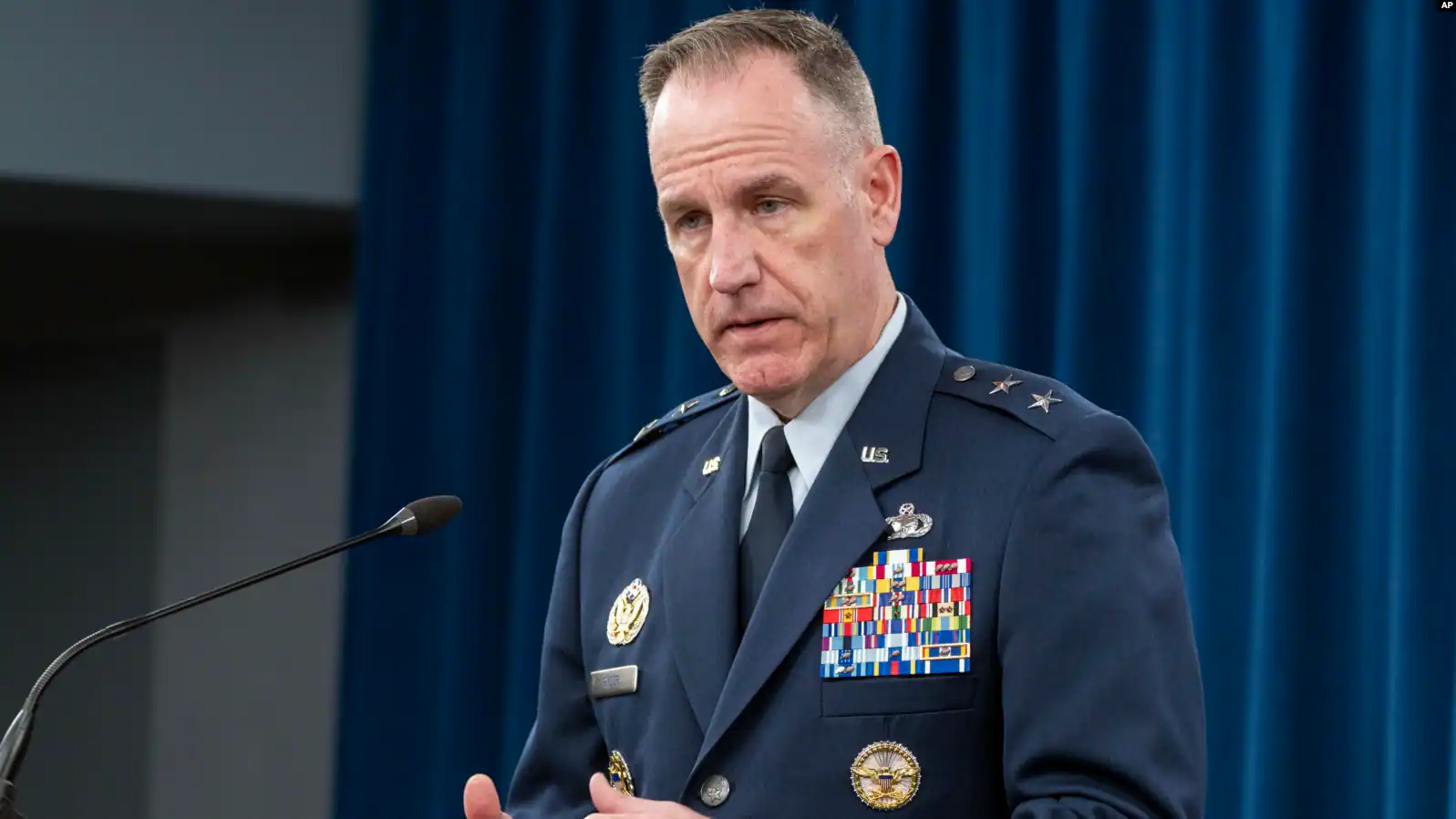
U.S. Enhances Ukraine’s Defense Capabilities Amid Escalating Conflict, Avoids Provoking Wider War with Long-Range Strikes
In a crucial pivot to bolster Ukraine’s defense, the United States has ramped up support with additional Patriot air defense systems and F-16 fighter jets. Yet, despite Ukrainian appeals for greater flexibility to strike deeper into Russian territory, the U.S. remains firm on its current policy, avoiding actions that could escalate the conflict into a broader war.
In a revealing interview with Voice of America, Pentagon Press Secretary Major General Pat Ryder elaborated on these critical decisions, shedding light on the intricacies of U.S. support for Ukraine amid the ongoing conflict with Russia.
President Biden recently announced the deployment of additional Patriot batteries to Ukraine, a move underscoring the high priority placed on enhancing Ukraine’s air defense. When pressed about the timeline for delivery, Ryder emphasized operational security but assured that efforts to expedite these systems are underway. The urgency is palpable, especially after recent Russian missile strikes, including a devastating attack on a children’s hospital in Kyiv.
Ryder acknowledged that the Patriot systems would require Ukrainian soldiers to undergo extensive training to ensure their effective deployment. “Air defense for Ukraine has been a priority for Secretary Austin and the U.S. government for a while now,” Ryder stated, highlighting the continuous efforts to equip Ukraine against relentless Russian missile assaults.
The arrival of F-16 fighter jets, another significant boost to Ukraine’s defense arsenal, comes with its own set of challenges. These high-tech aircraft will be prime targets for Russian forces. Ryder detailed how the U.S., alongside Denmark and the Netherlands, is leading efforts to train Ukrainian pilots and maintainers on the complex systems. This comprehensive training is crucial for ensuring the jets’ operational readiness and survivability in a hostile environment.
Despite these advancements, the U.S. maintains a cautious stance on Ukraine’s use of long-range weapons, particularly the ATACMS missiles. Ukrainian President Volodymyr Zelenskyy has repeatedly called for lifting restrictions on these weapons to strike deeper into Russian territory. However, Ryder reiterated that the U.S. policy remains unchanged, driven by concerns over potential escalation. “We don’t want to see unintended consequences and escalation to make this a broader conflict,” Ryder explained, emphasizing the delicate balance of providing robust support while avoiding actions that could widen the war.
The Pentagon’s strategy includes recent permissions allowing Ukraine to strike Russian targets just across the border, a move aimed at defending regions like Kharkiv from immediate threats. Yet, Ryder pointed out the importance of considering the broader implications of deeper strikes inside Russia. “You have to look at the second and third-order effects in terms of potential escalation,” he noted, underscoring the careful calculus behind U.S. military support.
In addition to enhancing Ukraine’s immediate defense capabilities, long-term support plans are also taking shape. NATO’s announcement of a new command center in Wiesbaden, Germany, is a significant step toward coordinated and sustained assistance for Ukraine. This three-star command center will focus on training and security assistance, aligning efforts with the Ukraine Defense Contact Group to ensure seamless support.
As Ukraine aspires to join NATO, this initiative will play a pivotal role in building interoperability and strengthening Ukraine’s military capabilities. “This will be complementary to and supportive of the Ukraine Defense Contact Group,” Ryder explained, highlighting the strategic importance of this command center in preparing Ukraine for future NATO membership.
The U.S. continues to walk a tightrope, providing substantial support to Ukraine while meticulously avoiding actions that could provoke a wider war. As the conflict evolves, the Pentagon remains steadfast in its commitment to helping Ukraine defend its sovereignty without crossing lines that could trigger dangerous escalations. This careful balancing act is crucial as the world watches the unfolding drama in Eastern Europe.
-

 Analysis10 months ago
Analysis10 months agoSaudi Arabia’s Billion-Dollar Bid for Eritrea’s Assab Port
-

 Opinion17 years ago
Opinion17 years agoSomaliland Needs a Paradigm Change: Now or Never!
-
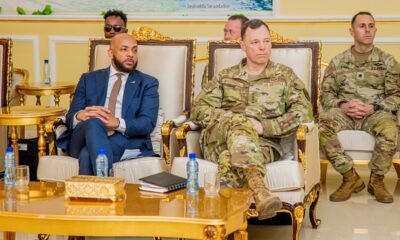
 Interagency Assessment5 days ago
Interagency Assessment5 days agoTOP SECRET SHIFT: U.S. MILITARY ORDERED INTO SOMALILAND BY LAW
-

 ASSESSMENTS9 months ago
ASSESSMENTS9 months agoOperation Geel Exposes the Truth: International Community’s Reluctance to Embrace Somaliland as a Strategic Ally
-
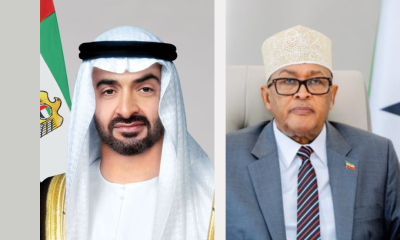
 Somaliland11 months ago
Somaliland11 months agoSomaliland and UAE Elevate Ties to Comprehensive Strategic Partnership
-

 EDITORIAL1 year ago
EDITORIAL1 year agoDr. Edna Adan Champions the Evolving Partnership Between Somaliland and Ethiopia
-
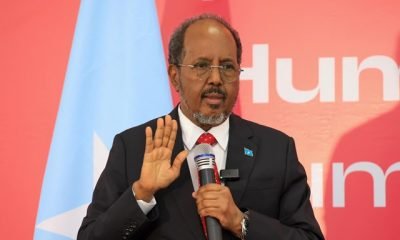
 ASSESSMENTS6 months ago
ASSESSMENTS6 months agoA Critique of the Hassan Sheikh Mohamud Administration and the Halane Enigma
-

 Africa2 years ago
Africa2 years agoHow Somaliland Could Lead the Global Camel Milk Industry


